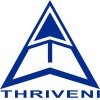Filter interviews by
NMDC Limited Mining Engineer Trainee Interview Questions and Answers
NMDC Limited Mining Engineer Trainee Interview Experiences
1 interview found
I applied via Walk-in and was interviewed before Feb 2023. There was 1 interview round.
(1 Question)
- Q1. Types and grade of ore's in percentage
- Ans.
The types and grades of ores in a mining operation are determined by their composition and quality.
Ores can be classified into various types based on their mineral composition, such as iron ore, copper ore, gold ore, etc.
The grade of an ore refers to the concentration of valuable minerals or metals in the ore, usually expressed as a percentage.
Different types of ores can have different grades, for example, high-grade i...
Top trending discussions






Interview questions from similar companies

I applied via Company Website and was interviewed in Apr 2022. There was 1 interview round.
(4 Questions)
- Q1. Say something about press filter
- Ans.
Press filter is a device used for separating solids from liquids.
It works by applying pressure to the mixture to force the liquid through a filter media while retaining the solids.
It is commonly used in industries such as chemical, pharmaceutical, and food processing.
Examples of press filters include belt filter press, plate and frame filter press, and rotary vacuum-drum filter.
Press filters are efficient and cost-effe...
- Q2. How to maintain pressure in press filter
- Ans.
To maintain pressure in press filter, ensure proper sealing, check for leaks, and adjust feed rate and pressure settings.
Check for proper sealing of the filter plates and gaskets
Inspect for any leaks in the system and repair them promptly
Adjust the feed rate and pressure settings as per the manufacturer's recommendations
Regularly clean and maintain the filter to prevent clogging and pressure drop
Monitor the pressure ga...
- Q3. What is the model of hydraulic cylinder in press filter
- Ans.
The model of hydraulic cylinder in press filter depends on the specific press filter being used.
The model of hydraulic cylinder can vary depending on the size and capacity of the press filter.
Some common models of hydraulic cylinders used in press filters include tie rod cylinders and welded cylinders.
The specific model of hydraulic cylinder used in a press filter can be determined by consulting the manufacturer's spec...
- Q4. Which type bearing use in bogie wheel
- Ans.
Roller bearings are commonly used in bogie wheels.
Roller bearings are preferred over plain bearings due to their ability to handle heavy loads and reduce friction.
Tapered roller bearings are commonly used in locomotive bogie wheels.
Cylindrical roller bearings are also used in some bogie wheels.
The type of bearing used depends on the specific application and load requirements.
Interview Preparation Tips

Junior Engineer Interview Questions & Answers
Hindalco Industriesposted on 6 Jul 2025
I appeared for an interview in Jun 2025, where I was asked the following questions.
- Q1. Do you have an awareness about Change Management?
- Ans.
Change Management involves structured approaches to transitioning individuals, teams, and organizations to a desired future state.
Change Management is crucial for minimizing resistance during transitions.
It includes planning, implementing, and monitoring changes effectively.
For example, in software development, Agile methodologies emphasize iterative changes.
Effective communication is key; stakeholders should be inform...
- Q2. What do you do when an machine goes in breakdown?
- Ans.
In case of a machine breakdown, I follow a systematic approach to diagnose and resolve the issue efficiently.
Assess the situation: Check for any immediate hazards or safety concerns before approaching the machine.
Identify the problem: Look for error codes, unusual sounds, or visual indicators that can help diagnose the issue.
Consult documentation: Refer to the machine's manual for troubleshooting steps and maintenance ...
- Q3. Give me an technical overview of the equipments you have overlooked.
- Ans.
I have overseen various engineering equipment, focusing on maintenance, operation, and optimization for efficiency.
Monitored and maintained HVAC systems to ensure optimal performance and energy efficiency.
Oversaw the operation of CNC machines, ensuring precision in manufacturing processes.
Managed the calibration of testing equipment, such as oscilloscopes and multimeters, for accurate measurements.
Conducted regular ins...

I applied via Naukri.com and was interviewed in Aug 2023. There were 2 interview rounds.

(2 Questions)
- Q1. Building construction
- Q2. Road construction
Interview Preparation Tips

I applied via Walk-in and was interviewed in May 2022. There were 2 interview rounds.

(2 Questions)
- Q1. 1-Relief valve digram and it's function
- Ans.
A relief valve is a safety device used to control or limit pressure in a system by releasing excess pressure.
Relief valves are commonly used in steam boilers, pressure vessels, and pipelines.
They are designed to open and release excess pressure when the pressure inside the system exceeds a certain limit.
This helps prevent damage to the system and ensures the safety of personnel working with the system.
Relief valves can...
- Q2. Process flow digram of plate rolling mill
- Ans.
A process flow diagram of a plate rolling mill
Raw materials are loaded onto the mill
The plate is rolled to the desired thickness and length
The plate is then cooled and cut to size
The finished product is inspected for quality
The product is then packaged and shipped to customers
Interview Preparation Tips

I applied via Naukri.com and was interviewed in Nov 2022. There were 4 interview rounds.

(1 Question)
- Q1. Related our Work experience
(1 Question)
- Q1. Related our Qualification
Related our behaviour and future plan or policy
Interview Preparation Tips

(1 Question)
- Q1. Thermal power plant is boiler maintenance and boul mill explain
- Ans.
Boiler maintenance and bowl mill are crucial for the efficient functioning of a thermal power plant.
Boiler maintenance involves regular cleaning, inspection, and repair of the boiler to ensure its safe and efficient operation.
Bowl mill is a type of grinding mill used in power plants to grind coal and convert it into a powder form that can be burned more efficiently.
Regular maintenance of bowl mills is necessary to ensu...
Interview Preparation Tips

I applied via Walk-in and was interviewed before Jun 2021. There were 2 interview rounds.

(1 Question)
- Q1. Why are you choose electrical maintenance and Automation
Interview Preparation Tips
good luck?

I applied via Walk-in and was interviewed in Nov 2023. There was 1 interview round.
(3 Questions)
- Q1. Density of slurry
- Ans.
Density of slurry is the mass of the slurry per unit volume.
Density of slurry is typically measured in kg/m^3 or lb/ft^3.
It is calculated by dividing the mass of the slurry by its volume.
The density of slurry can vary depending on the concentration of solids in the liquid.
For example, a slurry with a high concentration of solids will have a higher density.
- Q2. SPL meaning and SEL meaning
- Ans.
SPL stands for Sound Pressure Level and SEL stands for Sound Exposure Level.
SPL is a measure of sound intensity relative to a reference level.
SEL is a measure of sound exposure over a period of time, typically in decibels.
Both SPL and SEL are commonly used in the field of acoustics and noise control.
- Q3. Whit is red area
- Ans.
The red area typically refers to a section or region that is highlighted or marked in the color red.
Red area can indicate danger or warning.
In engineering, red areas on diagrams or blueprints may signify areas of high risk or critical components.
Examples: red area on a map indicating a fire hazard zone, red area on a circuit diagram highlighting a high voltage section.
Interview Preparation Tips
- Heat Transfer

I applied via Company Website and was interviewed in Dec 2023. There was 1 interview round.
(1 Question)
- Q1. Material science and Internal combustion engine Manufacturing processe
NMDC Limited Interview FAQs
Tell us how to improve this page.
NMDC Limited Interviews By Designations
- NMDC Limited Executive Interview Questions
- NMDC Limited Computer Operator Interview Questions
- NMDC Limited Junior Engineer Interview Questions
- NMDC Limited Shift Incharge Interview Questions
- NMDC Limited Production Manager Interview Questions
- NMDC Limited Executive Graduate Trainee Interview Questions
- NMDC Limited Assistant Manager Interview Questions
- NMDC Limited Maintenance Engineer Interview Questions
- Show more
Interview Questions for Popular Designations
- Senior Engineer Interview Questions
- Junior Engineer Interview Questions
- Apprentice Trainee Interview Questions
- Mining Engineer Interview Questions
- Deputy Engineer Interview Questions
- Mining Mate Interview Questions
- Junior Mining Engineer Interview Questions
- Senior Mining Engineer Interview Questions
- Show more
Overall Interview Experience Rating
based on 1 interview experience
Difficulty level
Interview Questions from Similar Companies
NMDC Limited Mining Engineer Trainee Reviews and Ratings
based on 2 reviews
Rating in categories
|
Executive
157
salaries
| ₹8.6 L/yr - ₹14 L/yr |
|
Executive Engineer
59
salaries
| ₹5.8 L/yr - ₹12.2 L/yr |
|
Process Associate
42
salaries
| ₹30 L/yr - ₹43 L/yr |
|
Senior Manager
41
salaries
| ₹20.7 L/yr - ₹35.4 L/yr |
|
Manager
37
salaries
| ₹13.7 L/yr - ₹25 L/yr |

Hindalco Industries

Aditya Birla Group

Vedanta Aluminium

Hindustan Zinc
- Home >
- Interviews >
- NMDC Limited Interview Questions













